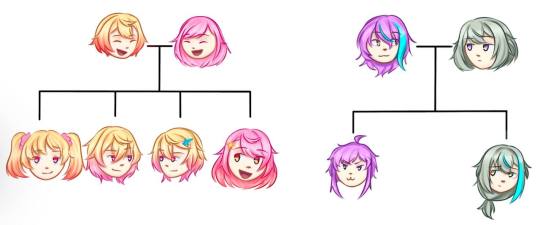#project next gen
Explore tagged Tumblr posts
Text
and we pass it forwards

#shinonome akito#aoyagi toya#azusawa kohane#shiraishi an#project sekai oc#vivid bad squad#project sekai#project sekai fanart#pjsk fanart#pjsk#fanart#purple’s arts!#purple's arts!#vivid street: next gen!
624 notes
·
View notes
Text
headcanons for albus severus potter!!!


i originally posted this on tiktok, but i've decided to post them on tumblr as well :) more are on the way for each character
#i also hc that he writes music#and everybody thinks hes stupid bc he gets bad grades but he actually is really musically talented#and nobody knew because HOGWARTS does not have a realistically rounded curriculum.#anyway spreading my devon bostick as albus severus potter agenda :)#he just SCREAMS albus#moody kinda mean sassy teenager vibes#albus 100% wears eyeliner...#but that might be controversial#can you tell im projecting onto him???#hes like a mix of sirius's and regulus's personalities#character headcanons#my hcs#albus severus potter#albus potter#harry potter and the cursed child#hp#scorpius malfoy#cursed child#hpcc#scorbus#the cursed child#headcanons#my headcanons#head canon#hcs#scorbus nation#albus severus x scorpius#harry potter#harry potter next generation#harry potter next gen
266 notes
·
View notes
Text







hey. don't cry. sitcom shinaya situation is here for you.
...MORE! pt1 / pt2 / pt3 / pt4 / p5 / pt6 / pt7 / pt8 / pt9 / pt10 / pt11 / pt12 / pt13 / pt14 / pt15 / pt16 / pt17 / pt18 / pt19 / pt20


#shinaya#shintaro kisaragi#ayano tateyama#kagepro#kagerou project#my art#2 dialogues here are from parks and rec (greeting card/planting ficuses)#kagekids#was that my next gen tag#i tried making shintaro sound more mature!!! also i wont apologize for giving him a mulet
203 notes
·
View notes
Text
Torakitty got a ghoulfriend! Clawdeen Wolfie!



I had so much fun with this custom! Definitely had some hiccups here and there...pretty much right at the end which was a bummer... but I'm obsessed with her! I have a couple more MH X LPS customs I'm itching to start when I get the time!
#monster high#monster high gen 1#littlest pet shop#lps custom#clawdeen wolf#toralei stripe#toradeen#id in alt#i love her with all my heart my god did i have a hard time towards the end of the project lol#all of the painting went really really well#i had a little trouble with the eyes initially cuz i used the wrong kinda paint but overall it was a great time#of course up until i finished it all and it was time to seal the paint#i use a good matte varnish but the problem was i forgot to water it down#so it kinda globbed up and dried really unevenly...she has some white spots where it pooled and dried#annoying and i was mildly devastated but you cant really tell#getting her head back on though....MY GOD#i couldn't get it back on for the life of me...i almost damaged the neck peg and absolutely destroyed the paint job on her chest#finally resorted to boiling water and that worked#then i had to try to mix up a fresh batch of paint to match as close as possible to her fur color#which i wasnt super successful at...but i was so over it at that point#i still love how she came out but im still so shook at how it fell apart right at the end#next one i do im not separating the head from the body fuck that lol#so yeah those were the trials and tribulations of this project#there are so many id like to do but im kinda limited by the blank lps molds i can find on aliexpress
94 notes
·
View notes
Note
Trenderhoof x treehugger
a sister for matcha latte and beanpole!

boho-chic is an aspiring fashion designer! she loves working with earthy tones and natural materials to create stylish yet wearable looks to sell at local markets. she especially loves to create her own hoof-made textiles and beaded jewelry!
~ mod honey 🍯
#i drew her while watching project runway in the background which. may have influenced things somewhat#mlp#mlp request blog#my little pony#mlp fim#mlp next gen#mlp art#next gen#next gen oc#fankid#ship kid#tree hugger#mlp tree hugger#trenderhoof#mlp trenderhoof#mod honey
57 notes
·
View notes
Text


Everyone’s moodboards/character portals have now been updated with new in-game portraits (if you’d like to check them out), but suffice to say that these two alone are making me ~emotional~
#something about a pair of legacy founders man 🥺#the way their moodboards lowkey match eachother too#once upon a time this was a wholesome family blog#how the times have changed amirite#which ~speaking of~ I know the moodboards for the main cast reflect their past narratives more than the current ones#those will be updating as we go so that’s my next project#but for now enjoy a little trip down the greener pastures of our past gens#I’m back to tormenting you soon 🫡#sims 4 historical#ts4 historical#ts4 decades challenge#sims 4 decades challenge#sims 4 legacy#ts4 legacy
69 notes
·
View notes
Text

While writing chapter 3 I've had the oportunity to describe Yellow Life Hermes's appearance change, and I could not wait to draw it <333 Look at my boy!!!!! <3333
#hermes#esmp s2#esmp hermes#hermes esmp#NGAU Hermes#*next gen au#*project fresh life#*apples art#I love him so muchhhh <33333#My baby boy!!!!
191 notes
·
View notes
Text
In my head Scorpius, after catching Albus getting frustrated from trying to do his homework for the 50th time, makes him a little study guide.
At first its just sitting next to Albus while he works and circling the parts in textbooks which he will find the information on. It helped a little, but Albus still struggled with wording and structuring his essays. So it moved onto Scorpius giving him his notes, but it was all too chaotic and instead of working Albus would sit organising all the papers into one neat pile. So he binded his notes in order of appearance from the textbook, and added example essays he wrote with them.
Overall this meant he spent alot of his time rewriting homework so he could put it in his study guide binder, but he didn't mind at all. And it paid off since Albus passed all of his OWLS with Outstandings and Exceeds Expectations.
(Despite doing all this, Scorpius still had to sit with Albus every time he did homework to help him with spelling and keeping focus. As long as Scorpius is sitting working, Albus will too.)
#albus severus potter#harry potter cursed child#harry potter#hp#cursed child#hp next gen#harry potter next generation#albus potter#scorpius malfoy#scorbus#i love you Dyslexic Albus#me shooting my projection beam onto all my favourite characters#me hugging all the “struggling academically and will be very moody if you mention it” characters
97 notes
·
View notes
Text


new year. new family picture Kim Legacy. 2025
thank you so much @welcometowillowsworld for the pose, it was more than perfect! 🧡
#and still missing gen 2 there. is just grans and the kids#happy new year guys!#i'm coming back to work next week so this is probably my last project from 2024#still got some screenies from this last month and hopefully i'll get time to play a little from time to time and won't go mia#sending love and best wishes for this year#my sims#simblr#ts4 simblr#ts4#ts4 cas#ts4 legacy#kim legacy extras#and all my guys. i'm not gonna name them all haha#kim legacy family pic
84 notes
·
View notes
Text
was figuring out what pokemon kanade would be and suddenly. skitty.

dont ask why i just know she would be a soggy skitty (if u know me then you probably know why)
#i love the kanaskitty#im having fun turning kanade into various creatures from different fandoms im in#ive done rain world and pokemon so far... time to find my next victim#sillyart#fav#crossover#kanade yoisaki#project sekai#prsk fa#nightcord at 25:00#pokemon#pkmn fanart#skitty#gen 3 pokemon
44 notes
·
View notes
Text

cosplay
#akitoya#aoyagi touya#shinonome akito#vbs#vivid bad squad#colorful stage#prsk fa#prsk#project sekai#cat’s art#p4#persona 4#not going to tag as souyo but it is. in spirit. they are souyo next gen#akito says yes because toya asked. akito does not want to style his hair like yosuke because he’s a ��pathetic loserboy’#i have like 5 wips that are all equal levels of unfinished because the art is not arting today#it still isn’t! stressing out about leveling up my artwork again but exponentially worse than two weeks ago#i love overthinking!!! NOT#anyways arent they so cute with glasses
924 notes
·
View notes
Text
Vivid Street: Next Gen (AU)
Meet the new kid on the block

#project sekai oc#project sekai#project sekai fanart#pjsk#pjsk fanart#purple’s arts!#purple's arts!#fanart#vivid street: next gen!#also I know today’s not Sunday#thought I’d add another post mid-week to the schedule#there won’t be smth every Wednesday#but I thought it’d be fine since I’m sitting on a stockpile of art#sorry I think tumblr will forever be behind my twitter lol#mid-week supplementals
108 notes
·
View notes
Text
Autistic!Scorpius Headcanons [Part 1]
He’s highly sensitive to touch. Doesn’t enjoy being surrounded by strangers in large crowds, and certainly hates being jostled/prodded by people he doesn’t know. He’s highly tactile with those he trusts, but even then he can still get overstimulated by too much hugging, cuddling, etc.
Tactile stimming! I love that Adam Wadsworth’s Scorpius constantly stims by running his hands along the fabric of his robes, fiddling with whatever he’s holding, and feeling out the textures on the closest set piece. I imagine Albus introduces him to muggle stim devices like spinners, fidget cubes, squishy toys, and spinner rings. If he doesn’t feel like using a stim object, he’ll tap out repetitive rhythms by drumming his fingers along his thighs or fiddle with his wand.
Some of his special interests include dinosaurs, A History Of Magic, and magical creatures. Since he was little Draco indulged him by taking the family on weekend trips to the magical zoo. Astoria insisted on visiting muggle zoos and museums, which is where he fell in love with dinosaurs. He loves that dinosaurs are one of the few subjects that both muggles and wizards have yet to fully understand. He loves reading about them, and adores how similar they look to some of his favorite dragon species.
Has extremely high emotional intelligence, which fuels his empathy. He has a deep understanding of his loved ones’ thought patterns, emotions, and feelings. It pains him to see the people he cares about in pain, so he is often the first person to lend a listening ear or a shoulder to cry on.
Despite his emotional intelligence, he has trouble picking up on social cues, especially from people his age
Very easily loses track of time while focussing on his special interests. He could spend hours in the library if the book he finds is interesting enough. Albus only takes issue with this when Scorpius forgets to drink water and accidentally misses meals. (Eventually Al tucks a few sandwiches and biscuits into his cloak to drop off at the library. He doesn’t want to interrupt the time Scorp sets aside for his special interests, but wants to make sure someone looks out for his health on the days that he forgets to.)
His sensory processing issues make him hyper-aware of his own emotions and sensations. Even too much of a good feeling can send him closer to sensory overload. We see this a lot in the Year 5 Broadway cast. Erik Christopher Peterson’s Scorpius becomes overwhelmed and begins to hyperventilate during intense situations: Albus pressuring him to climb onto the roof of the Hogwarts Express (negative experience), when the boys get trapped in the past and Scorpius realizes he’s outside of Bathilda Bagshot’s home (positive experience). Both times, Albus holds onto him and guides him through a brief breathing exercise. (These interactions only last a few seconds on stage, but they’re so significant.)
#im definitely not projecting#no way#no sir#scorbus#im making this into a multi-part series#because i have too much to yap about#autism#scorpius malfoy#scorpius hyperion malfoy#hp next gen#the cursed child#cursed child#hpcc#darklight
93 notes
·
View notes
Text
How I see Ruinene and Emukasa familys

From right to left
Ichiro Kamishiro, 17 y.o.
Mitsue Kamishiro, 10 y.o.
Hoshi Tenma, 16 y.o.
Seita Tenma, 15 y.o.
Seigo Tenma, 15 y.o. (they're twins, yeah)
Momoko Tenma, 10 y.o.
Everything is changing, but Tsukasa's hairstyle is the only stable thing in the world...
Tenmas be like
�� Let's all be with blond hair and don't say Hoshi!
— Let's all be with mom's eyes and don't say Hoshi!
Mitsue and Momoko's author - https://t.me/akylina_akyl
#fankid#project sekai#prsk#wxs#wonderlands x showtime#ruinene#emukasa#nene kusanagi#rui kamishiro#emu otori#tsukasa tenma#next gen oc
26 notes
·
View notes
Text
Next up, the one and only… Rarity!
The style icon of Equestria, glamorous showstopper, La Belle Femme Manifique, Rarity Noir Belle! A part seapony unicorn with an incredible taste for fashion and stones! She loves to help ponies shine from the inside out, and will be a sassy addition to our cast!

Speedpaint link!: https://youtu.be/go2nsKB_XoY?si=hQZ0ByHV0plm6piJ
I’m always looking for more artists, animators and voice actors to hop on board and help with this project of mine, so if you’re interested, don’t be afraid to DM me! I’d love to talk to you 💕
youtube
#mlp#my little pony#mlp redesign#mlp fan made generation#mlp fan work#mlp fan art#mlp fanart#mlp fim#my little pony friendship is magic#mlp:fim#my art#art#mlp next gen#mlp art#mlp g4#mlp friendship is magic#mlp: the Partyrose generation#mlp concept art#concept art#rarity#mlp rarity#small artist#indie cartoon#indie project#my work#Youtube
74 notes
·
View notes
Text
I FINALLY FINISHED THE THIRD CHAPTER!!! :D
I wanted to have posted it sooner but it's finally here!!!! Art of it will come at a later date so feel free to read while I work on that! >:3
#*project fresh life#*next gen au#my fic#fic link#ao3 fanfic#ao3 writer#Fresh Life - fic#fic update!!!
48 notes
·
View notes